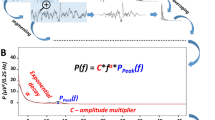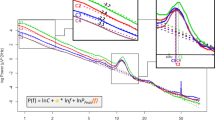Abstract.
Two-hour vigilance and sleep electroencephalogram (EEG) recordings from five healthy volunteers were analyzed using a method for identifying nonlinearity and chaos which combines the redundancy–linear redundancy approach with the surrogate data technique. A nonlinear component in the EEG was detected, however, inconsistent with the hypothesis of low-dimensional chaos. A possibility that a temporally asymmetric process may underlie or influence the EEG dynamics was indicated. A process that merges nonstationary nonlinear deterministic oscillations with randomness is proposed for an explanation of observed properties of the analyzed EEG signals. Taking these results into consideration, the use of dimensional and related chaos-based algorithms in quantitative EEG analysis is critically discussed.
Similar content being viewed by others

Author information
Authors and Affiliations
Additional information
Received: 25 September 1994 / Accepted in revised form: 10 July 1996
Rights and permissions
About this article
Cite this article
Paluš, M. Nonlinearity in normal human EEG: cycles, temporal asymmetry, nonstationarity and randomness, not chaos . Biol Cybern 75, 389–396 (1996). https://doi.org/10.1007/s004220050304
Issue Date:
DOI: https://doi.org/10.1007/s004220050304



